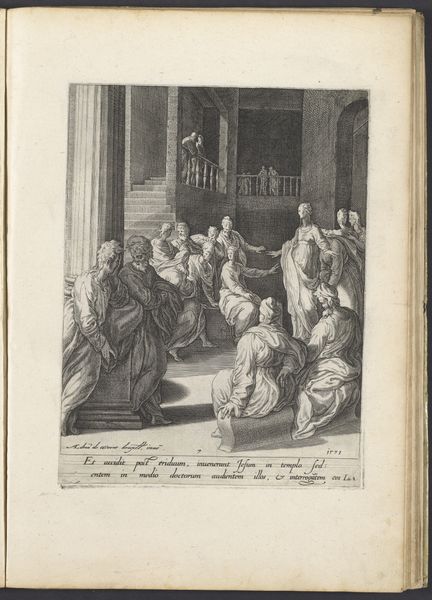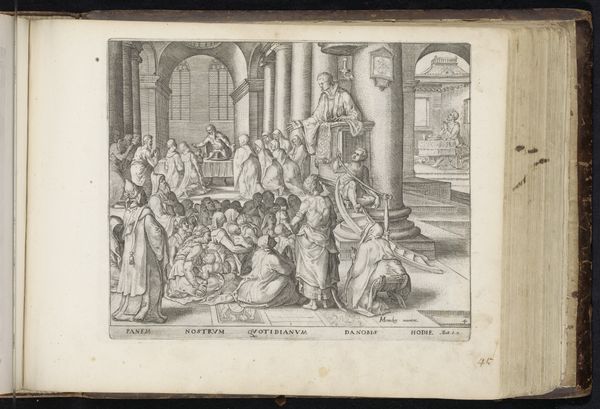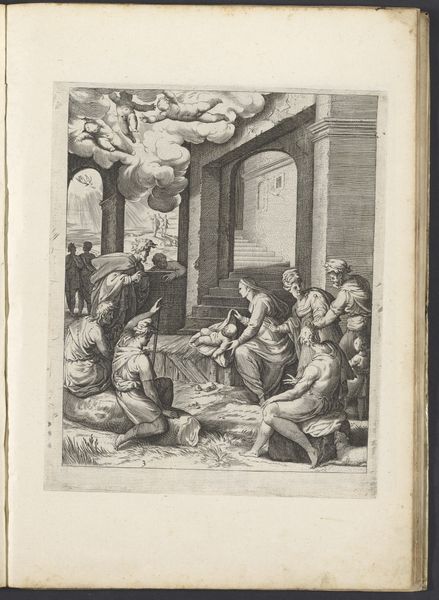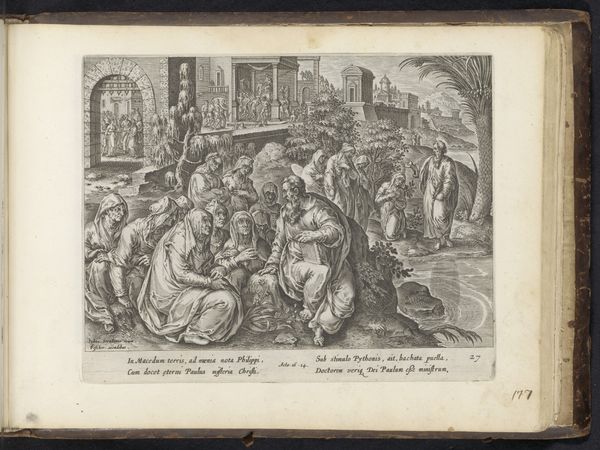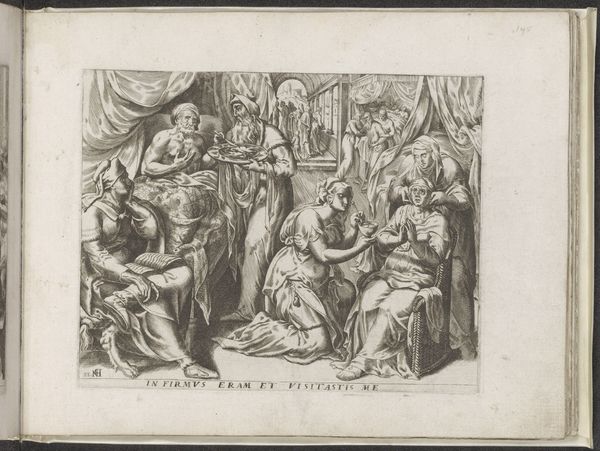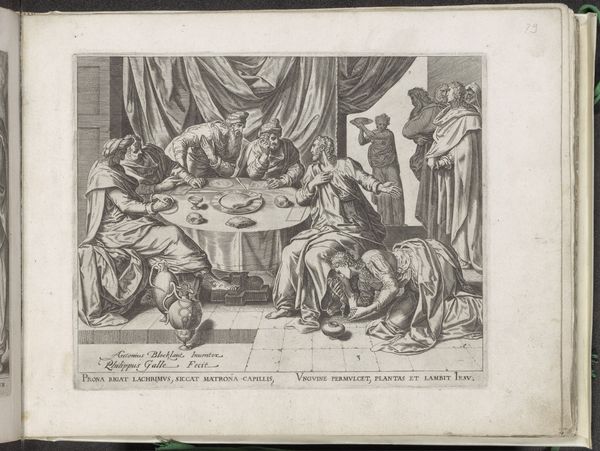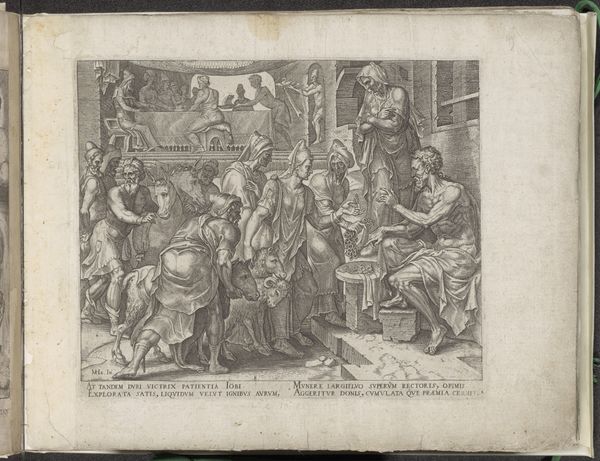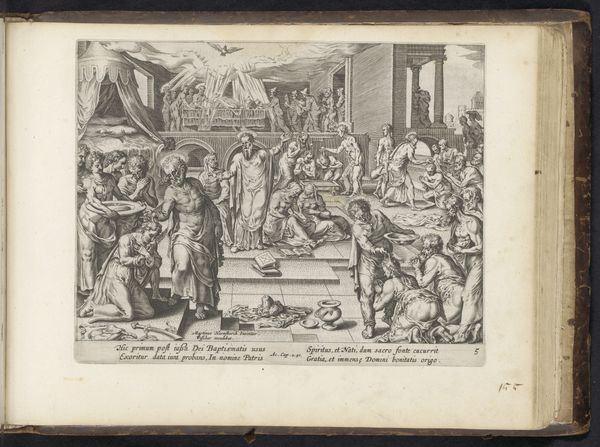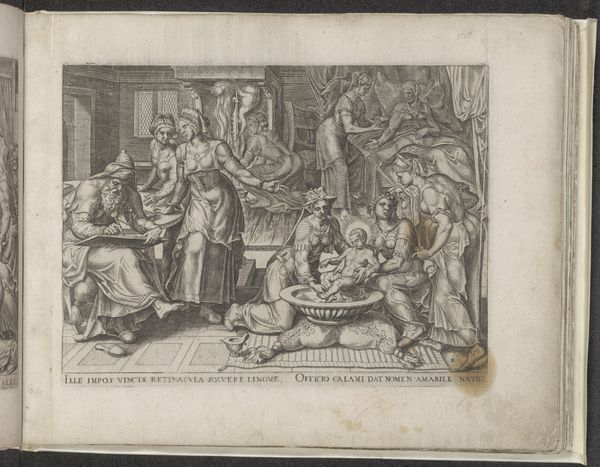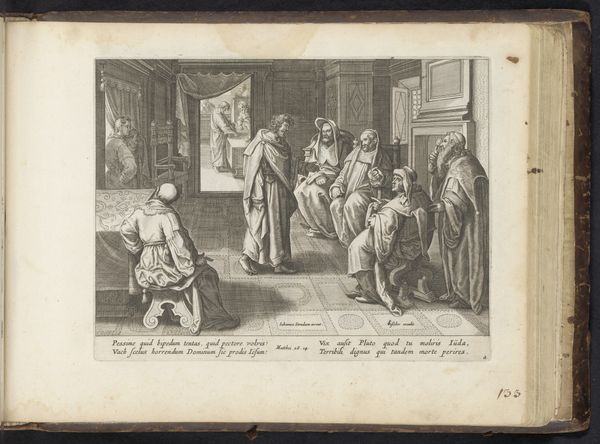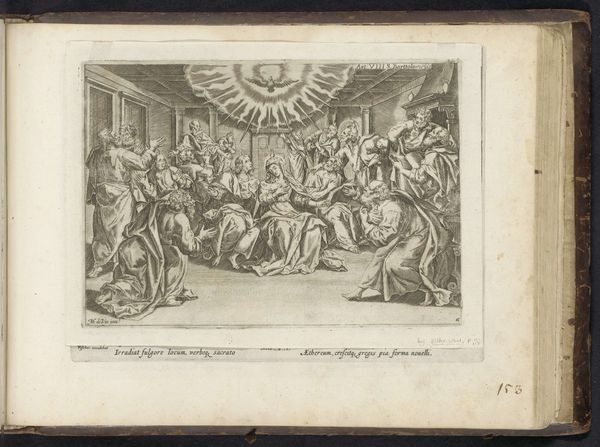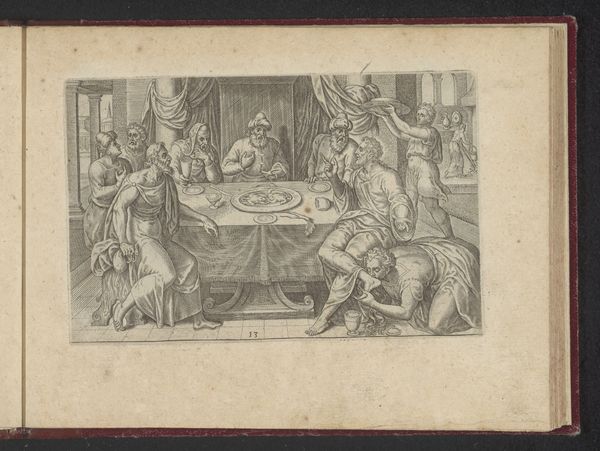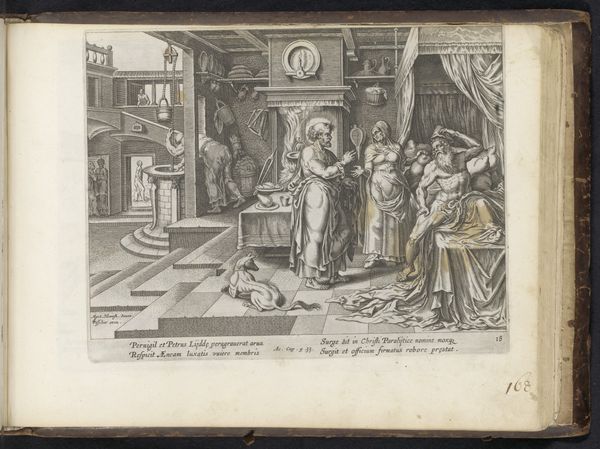
Dimensions: height 262 mm, width 201 mm
Copyright: Rijks Museum: Open Domain
Editor: This engraving from 1573, “Bruiloft te Kana,” by Isaac Duchemin, depicts a bustling scene. What I find striking is the foreground—figures seemingly engaged in laborious work compared to the opulence of the banquet above. How should we interpret the social dynamics here? Curator: Observe the contrasts within the print: the polished platters of food upstairs versus the coarse jugs carried by laborers below. It's key to acknowledge that prints like these were commodities in their own right, reaching wider audiences. Does this distribution and production relate to the subject, in your opinion? Editor: That's an interesting question! It seems like it democratizes a scene of wealth… a biblical narrative made accessible. I'm also curious about the choice of engraving—a medium that itself involves manual labor, precision, and reproduction. Curator: Precisely! Think about the labour invested. The act of engraving transforms an idea into a tangible object circulated widely. The skill involved challenges the separation of "art" from craft. What does this tell us about consumption and the cultural value of such images at the time? Editor: It brings the biblical story, initially accessible to only a wealthy elite, to the broader masses through more affordable reproductions. This allows more interaction. Curator: Right, the choice of scene -- the wedding feast with its plentiful wine and implied abundance -- speaks directly to the rising merchant classes of the time, who desired not just spiritual nourishment, but also social and material elevation. In short, do we view "fine art" when, arguably, the labour narrative it suggests says more? Editor: I see your point, reframing the engraving as not just an artwork, but a reflection of production, distribution, and social stratification helps unlock new levels of understanding. I'll definitely look at art with this perspective from now on. Curator: Absolutely. Remembering that even seemingly straightforward images often have much deeper roots.
Comments
No comments
Be the first to comment and join the conversation on the ultimate creative platform.
